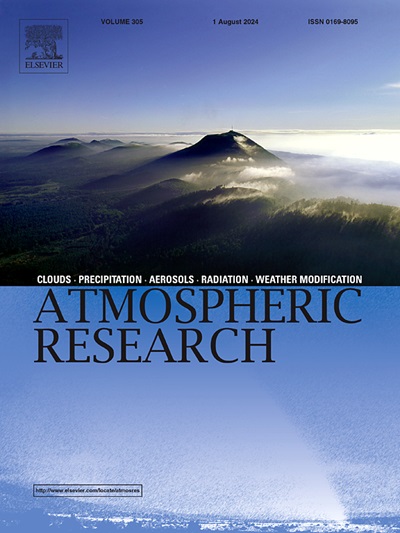Uncertainties in the estimation of Thornthwaite's Aridity and Moisture Indices in Greece over the last century using ground and gridded datasets
IF 4.5
2区 地球科学
Q1 METEOROLOGY & ATMOSPHERIC SCIENCES
引用次数: 0
Abstract
During the last decades several gridded climatic datasets have been developed offering thus long-term, continuous, and spatially uniform records of key hydrometeorological parameters. Few studies, however, have rigorously evaluated the accuracy and reliability of these datasets, especially in regions characterized by complex topography and sparse observational data, such as the Mediterranean. Moreover, even fewer have explored how uncertainties inherent in these datasets affect derived climatic indices. To address this gap, the present study deals with the application of ground station measurements and a gridded dataset (CRU_TS 4.04) to estimate the aridity index (AI) and Thornthwaite's Moisture index (Im) over the Greek peninsula for three different consecutive climatic periods. Ground station data estimations are compared against the outcomes of the respective gridded datasets. Results show that the application of gridded data led to AI values increase in many areas, altering the aridity classification from semi-arid (SA) to sub-humid (SH) or humid (H) categories. Further, the application of gridded data led to both underestimations and overestimations of the Im, depending on the site: more dry conditions along the western coast (in most cases) and the eastern Aegean islands (with significant differences in some of the islands) and more humid conditions over the northwestern mainland and the southern part along with the Aegean islands. These results suggest that while gridded datasets always offer an alternative, careful consideration is required when they are used in regions characterized by complex topography (heterogenous terrain, site continentality and extensive land-sea contrast) and also temporal climatic variability.
利用地面和网格数据集估算上个世纪希腊Thornthwaite干旱和湿度指数的不确定性
在过去的几十年里,已经开发了几个网格化气候数据集,从而提供了关键水文气象参数的长期、连续和空间均匀的记录。然而,很少有研究严格评估这些数据集的准确性和可靠性,特别是在地形复杂和观测数据稀少的地区,如地中海。此外,探索这些数据集中固有的不确定性如何影响衍生的气候指数的人就更少了。为了解决这一差距,本研究处理了地面站测量和网格数据集(CRU_TS 4.04)的应用,以估计希腊半岛三个不同连续气候时期的干旱指数(AI)和Thornthwaite湿度指数(Im)。将地面站数据估计值与各自网格化数据集的结果进行比较。结果表明,网格化数据的应用导致许多地区的AI值增加,将干旱分类从半干旱(SA)转变为半湿润(SH)或湿润(H)类别。此外,网格数据的应用导致了对伊姆的低估和高估,这取决于地点:西海岸(在大多数情况下)和爱琴海东部岛屿(在一些岛屿上有显著差异)的干旱条件更严重,而西北部大陆和南部地区以及爱琴海岛屿的潮湿条件更严重。这些结果表明,虽然网格数据集总是提供另一种选择,但当它们被用于具有复杂地形特征(异质地形、站点大陆性和广泛的陆海对比)和时间气候变率的地区时,需要仔细考虑。
本文章由计算机程序翻译,如有差异,请以英文原文为准。
求助全文
约1分钟内获得全文
求助全文
来源期刊

Atmospheric Research
地学-气象与大气科学
CiteScore
9.40
自引率
10.90%
发文量
460
审稿时长
47 days
期刊介绍:
The journal publishes scientific papers (research papers, review articles, letters and notes) dealing with the part of the atmosphere where meteorological events occur. Attention is given to all processes extending from the earth surface to the tropopause, but special emphasis continues to be devoted to the physics of clouds, mesoscale meteorology and air pollution, i.e. atmospheric aerosols; microphysical processes; cloud dynamics and thermodynamics; numerical simulation, climatology, climate change and weather modification.
 求助内容:
求助内容: 应助结果提醒方式:
应助结果提醒方式:


